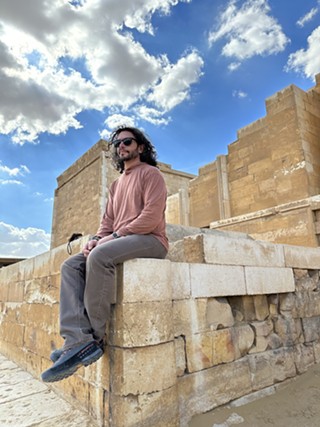All words, in every language, are metaphors.
—Marshall McLuhan
When we conceived Chronogram 24 years ago, we had a clear intention: The magazine was to be an example, or paradigm, of the creative work and the community brought to light within its fold. The medium was to be seamless with the message; the means congruent with the end.
We were inspired by T. S. Eliot's concept of the objective correlative. He spoke of poetry when he defined the phrase as "a set of objects, a situation, a chain of events which shall be the formula of that particular emotion." Extending this sensibility to magazines, we had an image of an object—the magazine with its format, content structure, voice, and design—itself evoking the experience of the art and artists, writing and writers, the events and communities described in its pages.
The first decision we faced in testing this intention was in designing Chronogram's cover. We knew we wanted to dedicate the cover to featuring the work of local artists, but we were dismayed when we tried to overlay the art with text flaunting the contents of an issue. The type over the artwork was clearly a distraction from the work.
Placing type on the cover is, of course, common practice for magazines, and it seemed necessary for us—until we realized it wasn't. The clarity that we would not cover the art with type was liberating. It was, for us, a step toward creating a medium that was genuinely representative of its message.
More deeply, we had in mind a personal valuation of parity between inner and outer; that packaging should be a clear representation of its contents, like the edible rice paper wrappers on some Chinese candies. The best design, we thought, is nearly invisible to the untrained eye—a translucent form-giving to the meaning it conveys.
One image of a human being is like an ancient Greek actor—a being behind a mask (called a persona). The mask had a built-in megaphone meant to amplify the voice of the actor behind the mask. Practically, a person has two distinct but related parts—an intrinsic, essential part that's the natural result of genetics and larger forces, and a conditioned part comprised of all that's learned from and for interacting with the world. The outer piece is meant to amplify the voice of the inner, though it tends to speak for itself.
The question for a human being is the same as the one we had for the magazine: How can a person's outer form, appearance, and presentation—personality—align with what we she is at an essential level?
Herein is a perennial dilemma, the paradox that shows up in every sphere—it's the struggle between noumena and phenomena, form and function, sign and signified, relative and absolute. Whatever the formulation of the dyad, there's a distinct feeling of tension in the opposites. And yet in this tension is the possibility of reconciliation. Indeed without such tension there is no energy for development.
A late snowfall came in the early days of spring. Many fledglings were knocked from their nests, and a young but almost mature Robin redbreast showed up in front of our porch, attempting to bury itself in some exposed leaves. Our two house cats stood on each side of the young bird, with tails twitching. My son rescued the Robin just before both cats pounced.
We put the Robin in what seemed like the only suitable place—the bird cage with our house parakeet, Sirius—to wait out the storm. They eyed each other warily. We gave the Robin some cat food in a dish, and soon the birds were eating together, speaking in their respective tongues.
Nature is a good place to see form very naturally following function. A Robin's form precisely expresses a Robin's nature, as does that of a maple tree, or a patch of lichen.
Human beings are more variable creatures, seeming to embody a whole range of qualities. A meditating monk can show a mineral quality like some kind of stone. A group of musicians playing together can seem to embody a grove of trees blowing together in the wind. An overblown narcissist politician spouting hateful rhetoric fully embodies the quality of a squealing pig interrupted while eating compost at his trough. A really balanced person can emanate the quality of perfect humanness, and can even broadcast angelic vibrations.
The balance of inner and outer is not a dyad, but a triad—with the third element being consciousness itself. Within the context of consciousness the inner impulse is active, to which the outer expressive part is passive and serves the content. Meanwhile, the outer part is active in relation to the world. Every stick has two ends, and the dog retrieves the whole bit of wood.













